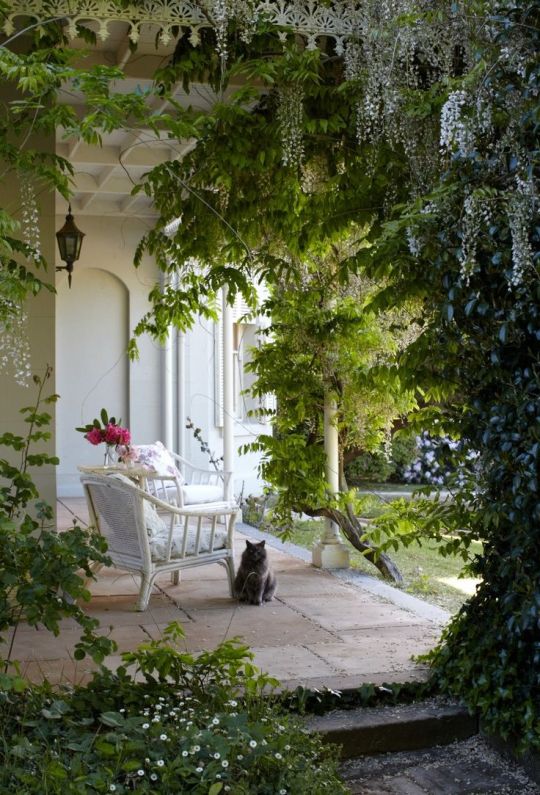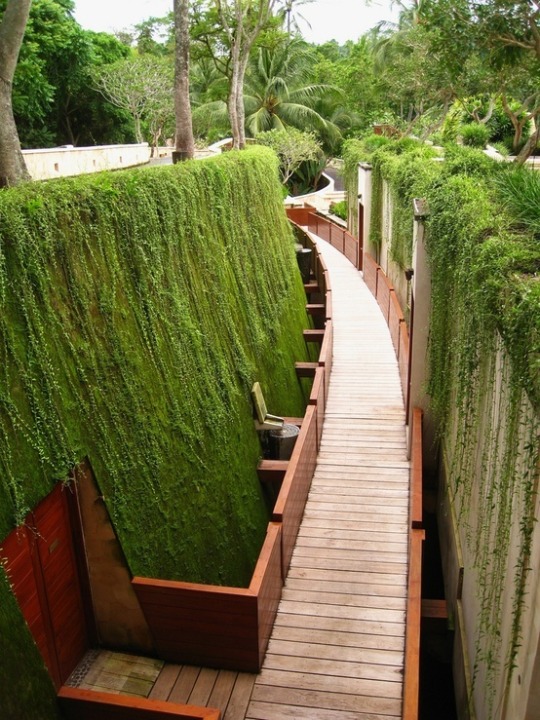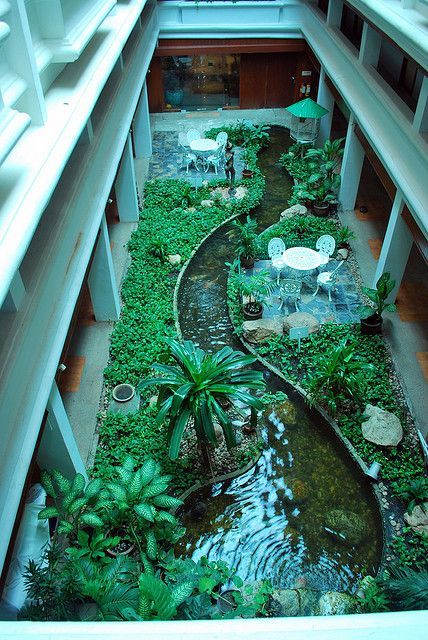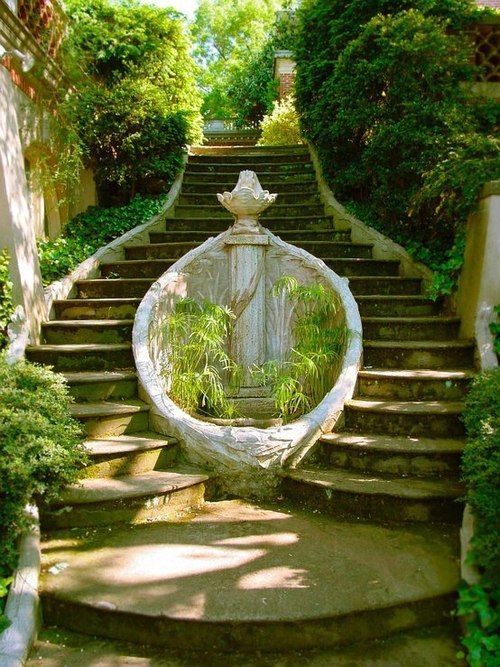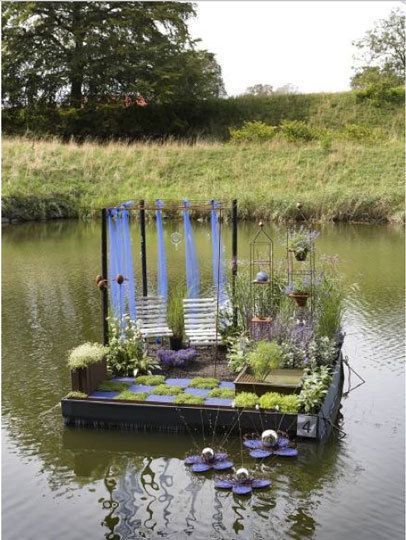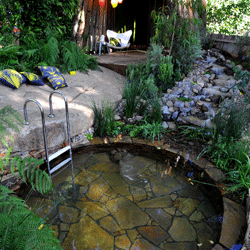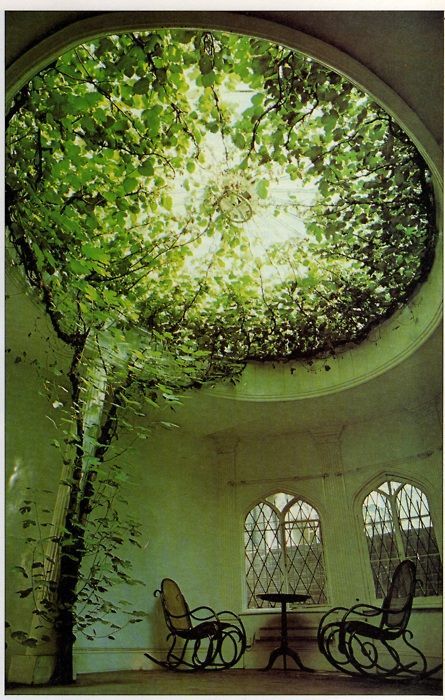Don't wanna be here? Send us removal request.
Text
the reason old memes always come back is because, in order to truly destroy a meme, you must cast it into the fires of mount doom and sadly

193K notes
·
View notes
Text
Eytmologies of Skyrim Place Names
I’m working on Yet-Another-Settlement Mod (tm) that probably won’t see the light of day, but in an effort to lend the new locations (and some old ones) a sense of historical depth, I have written a lexicon of place names and my headcanons for what they mean and how they evolved.
A Lexicon of Skyrim's Place Names and their Eytmologies
Laenathr Dale- (Old Nordic) A village in the boot of the Pale. A traditional waypoint for travellers on the northern road connecting Dawnstar to Winterhold and Windhelm, the site is named either for the slaying of a great dragon, or possibly the repulsion of Empress Hestra's army in the first era. The name translates to Serpent's Bane or Serpent's Defeat.
Lainalten- (Old Hjaalic) The valley and associated village in western Hjaalmarch, between the southern edge of the Drakmyr Swamp and the Othrotheim Falls. Known as the Gap of Lainalten, it has historically served as the mustering ground for Hjaalic warbands. Legend states the Hjaalic king Geatmod marshalled his forces in a successful last stand against the forces of Jarl Braggi of Whiterun, proclaiming, "La, nae alutan", or Behold! This which we will never surrender.
Yvirnam Wood- (Old Nordic) The traditional name of the forest on the eastern edge of Eastmarch, in the foothills of the Velothi mountains. Translates, essentially, to "Overlooking Forest". It is also the name of a town at the foot of the Rift's northeastern slope, marking the traditional boundary between the ancient kingdoms of Oestramarch and Suthramarch, the predecessors of Eastmarch and the Rift.
Kerlingaet Tower- (Old Nordic) A keep and associated village in the middle Rift, north of the River Treva. The name translates as "Hag-Guard", in accordance with its erection by the 7th Thane of Nimalthian as a bulwark against the Hircuietic hagraven coven that had been terrorising farmers in the area. Known on Imperial maps as Reich Corigate.
Nimalthain- (Old Nordic) An ancient city founded by early kings of Riften, originally located on the source of the river Treva from Lake Geir. The original city, dating back to at least the mid-First Era, was destroyed by an Earthquake in 3e400. The tremor strikes right beneath the city, tossing up promontories of rock and shifting the course of the river Treva. Resettlement efforts found a new village to the east, where the river opens into Lake Honrich. The name first as Nidr-althane, "Scion of the River Thane".
Riften- (Old Nordic) The capitol of the Rift Hold, and prior to that, the early nordic kingdom of Suthramarch, the city of Rifton dates back to the early 1rst Era. According to scant early sources, the site was originally a meeting place and trading hub for the southeastern Snow Elves, and the campaigns of King Harald saw it taken and fortified. The earliest attested name reads as Raeftonn, or "Roof of Teeth". Legendary accounts say the first queen of Suthramarch was widely famed for slaying dragons, and killed so many that she was able to nail the roofposts of her hall together with their fangs. The name of the hold appears to be unrelated, though their names have blurred together in the intervening millenia (see below).
The Rift- (Old Nordic) Skyrim's southeastern hold. The entire hold sits at considerably higher elevation than neighboring Eastmarch, and has historically be easily defended, given there are approximately four passes an invading army might make use of. The name seems to originate from one of these, the winding, narrow gap in the northeast of the hold, currently connecting Rifton to Windhelm. Early Nord sagas term this pass "Gata na Rifa", the Path of the Tear/Rip, in reference to how the mountains seem to be torn apart. Probably the route by which early Nords entered the region.
Dunbardag Wall- (Old Nordic) Small fort and village in the Pale, right on the crossroads between Dawnstar, Windhelm and Whiterun. It has held strategic importance as a strong point for armies of all three holds in Skyrims history of petty wars and feuds. The name translates, predictably, to "Thunderous (Tumultuous?) Battle". It has been variously rendered as Dunpar, Dunbara, Dunabar, and others.
Dunstad- (Old Nordic) Another fortress-village of the Pale, in the pass between the Eastern and Western Bromjunaar mountain ranges. It sits on the divide between the two halves of the Pale; the White Shore, the coastal region of the north, and Yorgrim, the snowy forest in the south, colloquially known as the Boot. The name translates as "Thunderous City", and records show it as the seat of a clan known as the Dunrotthr, "Thunder-Voices".
Heljarchen- (Old Nordic) A village in the southern Pale, nearer to Whiterun than to Dawnstar. The name is ancient, but can be translated roughly as "The place of hidden/covered earthly (deep?) knowledge". This may be a reference to the nearby Dwemer Tower of Mzark. A legend about the ancient Dragon War, in Skyrim's shadowy, mythic past, features a hero given the epithet Hjel-Jard-Kenna aiding the dwarves in capturing a dragon, who is forced to use his fire to light a miniature sun underground. Like most myths dealing with the Dragon War, it is highly fragmented, and comes down to us through multiple retranslatings.
Markarth- (Early-Modern Nordic, via Reachman) The capitol city of the Reach, Markarth began life as a Dwemer stronghold, likely a trading post given its uncharacteristic number of surface dwellings, combined with the typical deep-cutting Dwarven undercity. The name we have today is a Nordic misrepresentation of the ancient Reachman name for the city, as the tribes of the Reach settled the citadel shortly after the disappearance of the Dwemer. Their name for the city was Mhor Cianarth, "Great City on the River Karth". -Note: Karth, of course, is the Nordic rendering of Cianarth, both the Reachman name for the river and the river's associated great goddess, related to the Imperial Kynareth and the Nordic Kyne. Variants on the theme appear in Nordic, Breton and Imperial documents throughout early history as Mor Kynarth, Morciarth, Marciath, etc, but Markarth seems to have become the official name following the conquests of Tiber Septim. The former Reachman kingdom was given to Hjaalic war-leader Aetheldin the Ram, for his warband's role in taking the city, and existed as a minor Nordic kingdom before being consolidated into the Kingdom of Skyrim in the time of Aetheldin's heir, Heorswulf.
Falkreath- (Early-Modern Nordic, contested origin) Early attestations of this name differ greatly. The old Falkreathan name for the kingdom is Fialcertha, "the Mountains of the Stag". This is supported by the stag's historical predominance as a symbol of the region in its various appearances as an independent kingdom, a Nordic holding, a Colovian Principate, and most recently a Nordic holding again. However, ancient carvings in the Dovah style of old Nordic reference the area as Feykro-Wuth, the Old Forest, and other ancient Nordic sources speak of Fjelkvik, "the Living Mountains". Much like Markarth above, the territory's history of changing hands has left several names across the historical record, but the names Falkreath and Falkrenth become predominant in the early Third era. After the death of Cuhlecain, Emperor Zero, former King of Colovian Fialcertha, various factions arose fill the empty throne. The Hjaalic warband left behind by a pre-imperium Talos, as Cuhlecain's General, led a short but bloody campaign and claimed rule for their commander, Eodgard of the House of Stuhn. He petitioned then Emperor Talos for legitimacy and took the title King of Falkreath. It remained an independent Nordic Kingdom until the wave of Nordic national identity following the War of the Red Diamond saw Larcwide II bend the knee to an Imperial approved High King, and take the lesser title Jarl.
Historical Note- Many more modern place names not rendered explicitely in Tamriellic, especially in Western Skyrim, come to us largely through the Hjaalic dialect of Early-Modern Nordic. The formation of, and sending out of warbands is a notable Hjaalic tradition, perhaps stemming Hjaalmarch's lack of natural resources and the pan-Nordic warrior culture, and Nordic armies following Tiber Septim after his victory at Sancre-Tor seem to have been filled by Hjaalic warriors. The result of this appears to be that Hjaalic culture, long a distinct offshoot of traditional, Old-Hold Nordic traditions, came to dominate Skyrim's South and West. The bastardized Colovian-Hjaalic tongue spoken by Tiber's legions and tempered in the trade crossroads of Bruma and Falkreath seems to have become the lingua mercatura, and would be codified into early-Modern Tamrielic in during the reign of Tiber Septim's successor, Pelagius I.
1 note
·
View note
Photo
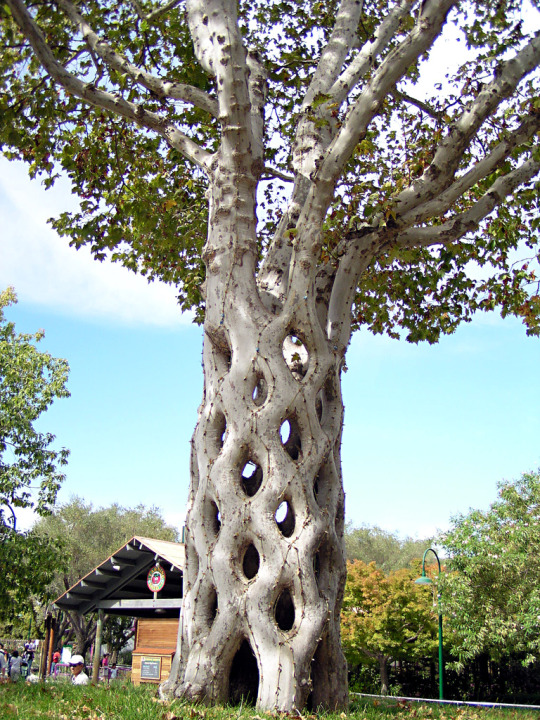
Circus Tree: Six individual sycamore trees were shaped, bent, and braided to form this.
824K notes
·
View notes
Text
Cracky Snow-Elf Headcanons
This episode of Michael’s somewhat groundless Elder Scrolls theories- why are there no Snow Elf ruins in mainland Skyrim?
Ok.
So. The ancient Falmer were strong enough as a nation to rout the early proto-Nords at Saarthal and put up an intense resistance during the pogroms of Ysgrammor’s Return. They lived in the lands at the Rim of the Sky for unknown years, long enough for the Nords to name the land for them (Mereth- the land of the elves), and were clearly builders of monumental stone architecture, as showcased in the Forgotten Vale; so why are there no ruins?
Forgetting the real world reason of “Bethesda didn’t bother modeling/programing/intergrating them”, the only reason in-universe is that the Nords completely demolished, dismantled, and removed every single piece of Falmeri architecture ever erected, and that seems... a stretch. To completely erase a culture’s entire material impact would be impractical at best. Here are some of my ideas-
Some ruins using the Nordic set should be Falmer. The temple of Meridia in Haafingar is the most obvious example; you know the patron god of the Ayleids isn’t going to be revered by a bunch of elf-hating Nords. I think the rubble just east of Rorikstead, with a shrine to Zenithar, could be a site for a Snow-elf city, and I like to believe several Nordic ruins and sites are built over Falmer ones. Examples would be Bromjunaar- the conquering Dragon Cult taking over the crown of Falmer cities would explain the past preeminence of the site. Solitude itself I like to think was a Falmer city with a Nordic holding built on it’s ashes.
My other theory addresses why there might not be as many ruins and gets a little more out there, but hey, rule of cool. My thought is that Falmer architecture is built from stone and ice the same way Bosmer build their tree-cities- they are sung from the material in a feat of Dawn-era style magic. Bosmer Greenspeakers can build whole villages in days with speech and song, and this ties in with the other music-based magical practices in Tamriel, like the Thu’um, the Shehai, and the Tonal Architecture of the Dwemer. This literal tonal architecture would be raised and shaped from the ice and living rock by powerful mages, and magic, the gift of the elder races, would have been intrinsic in its very structure and fortitude, allowing it to stand storms and the weariness of time. It also spelled their doom.
My theory continues- when the Nords first arrived on the shores of Tamriel, navigating the treacherous Sea of Ghosts, the Falmer lived peacefully alongside them. Perhaps knowledge was shared, cultural crafts and specialties. From the Falmer the Nords learned the art of Stone-singing, of binding magic into rock and raising it into cities, and the Nords would use that power to later build sweeping halls “that seemed to fit without seam or mortar, as if constructed by mythical Elnofey” (PGE 1rst Edition), but after Saarthal burned and the Nords returned on a genocidal campaign, the shouting Dragon Priests and clevermen used their knowledge of stone-song to undo the magic in the stones, to shatter, rend to dust, the cities of the Falmer from within their very heart.
Obviously they couldn’t have totally wiped all trace of the Falmer from the surface and there should totally be something, but I headcanon this as a reason why we don’t see much of anything outside of the Forgotten Vale.
18 notes
·
View notes
Text
Reachman Ramblings 2
Cuz insomnia will do that to a guy.
I headcanon that the temple of Dibella in Markarth has changed purposes a number of times- before its current incarnation, it was Tiber Septim’s School of the Voice that appears in the PGE 1rst Edition, which was noted as being staffed by charlatans and hacks, and before that it had housed Dibella’s native cult. I’m definitely of the camp that believes the preponderance of Dibella shrines around the Reach are signs of native worship, not defamation, and I like to believe that the temple’s current form is a resurfacing of a quashed practice by an invading power.
None of the current priestesses seem to be Reachmen, but I like to think perhaps some reachwomen worshippers of the native religion got in the good graces of the imperial cult, and under the aegis of the new authority, started to reclaim what was theirs, complete with an oracular sybil.
My headcanon about the Sybil is that the crag the temple is cut into, the temple which cuts deep into the rock, contains a vent of subterranean gas, infused with some mystic quality since the Reach just seems to be leaking with old, wild nature magic. Whether the Dwemer had a use for the gas I don’t know, but I headcanon that the ancient Reach cult used it for divination, and thus the tor in the center of Mhor Cianarth, greatest city of the Reachmen, was not simply a temple to the Reachmen’s arguably most important deity, this crag was sacred. An axis mundi, a navel of the world, this was where the Flowering Goddess spoke to Her mortal adepts.
My other rambling for today is my belief that the Reachmen didn’t just worship Peryite in the hopes of fending off plagues or because they’ve just got a thing for the more repulsive daedra- He was Preducha the War God, who would empower the Reachmen to be a plague, leading them to battle playing a wheezing warpipe, whose drones issue foul winds.
8 notes
·
View notes
Text
Some Reachman Ramblings
Cuz it’s two in the morning and I can’t sleep, so why not?
So-
I headcanon that “Karth” is a Nordic mangling of the native Reachman name for Kynareth, where she is goddess not worshipped but feared. She is never prayed to but simply appeased, with every effort on simply not drawing her attention. Her fury brings the flood and mudslide and the rising of her water’s torrential flow. She and her dead husband Sheorshan, who steals the souls of fallen warriors from returning to the earth and their ancestors, must be appeased, in the hope that they will pass you over.
Her cult center is clearly Lost Valley Redoubt, right at the head of the Karth, and architecturally tying in well with her aspect as an air goddess. I believe it is also the cult center for the Reachman aspect of Y’ffre, given his role as god of stories in a culture that presumably goes all-in for oral traditions of mythology and law. The whole Bard’s Leap Summit makes me headcanon the complex as an ancient Reachman bardic/druidic school, where aspiring story-shamans would be tested.Plus while native Dibella and Hircine have flora and fauna pretty well covered, and Namira works as the only-barely-metaphorical earth to which the dead return, Y’ffre is the actual soil of the Reach, the rocky bones of the mountains, and thus makes a nice foil for Kynareth as the sky and waters.
10 notes
·
View notes
Text
So I’ve got this long-suffering idea in my head about the mod I’d like to make for Skyrim if I actually had modding skills, and it’s basically this- a new-lands mod on an isolated archipelago, separated from mainland Tamriel by a supernatural, unceasing storm front and cut of from Tamrielic history, but peopled by her castaways. Unfortunately the dream in my head FAR outpasses anything I could conceivably create, and I don’t really expect anyone to read anything I post about it, but I plan on using mah tumblr to deposit all the crack I’m going to write about it anywho.
Warning- There is a heck of a lot of cracky fanfic about something that exists only in my head behind the keep reading, but if that’s your thing I hope you enjoy.
Bellanfell, Illvidreth- An Outsider’s Perspective
The Journals of Cassian Marcellus, formerly of U. Gwylim Press
It is the Tamrielic year 3E 380, and I have found myself washed ashore in a strange new land. I had been en route from Wayrest to Solitude when our ship, a slow moving Breton trading vessel, was pulled off course into the western seas. The mate was the first to notice the storm which the currents seemed to pull us inexoriably toward. Before we knew it, we were under the weather, beaten down by freak waves and pelted with hailstones. Buoyed up and down by the raging ocean with the ferocity of Kynareth’s own rage, I could do naught by hunker below, when I heard the reef tear the keel to splinters. A reef, here, in empty ocean pulled far from sight of the High Rock coast! As the ship began to fall to pieces, I must have dove through a hole on instinct, and gone limp in the frigid water.
When I awoke, I was lying on the sands of an unfamiliar beach. A forest of oak and birch lay before me beyond the rocks, and the remnants of my ship decorated the shore with tatters and spars. In some act of cosmic balance, I was quickly discovered by a kindly local shepherd, who lived not far from the beachhead and often went to watch for cursed travellers like myself. Upon being nursed back to relative health in his cottage, I asked where in Tamriel I could possibly be, only to learn that I wasn’t at all! Here, beyond the fringe of the western sea and isolated by eternal storms was an island settled by shipwrecks and castaways, peopled by driftwood.
The island I had washed up on was known as Windsend, and home to the twin towns of Flotsam and Jetsam, and let it not be said that the locals were not aware of themselves. Windsend is but part of a larger archipelago, known to the locals as Bellanfell, or Illvidreth- either way, a rough eytmology is “Storm-land”. After thanking the shepherd for his kindness and retrieving what I could from the washed up remains of the ship, I, and a few others who had found their way ashore, made for the largest island, known if it is thought of at all as the Mainland. Since I have made my academic career of documenting the people of Nirn, I may as well continue in this new world, and hope that these journals may help some future castaway in learning about Bellanfellic society.
A History of Settlement-
The consensus on who first settled in Bellanfell seems to be rocky at best. Two major groups seem to have a claim to it; the Vindurlings of the north and the Velodmer of the western island Velodfer, though the Na-Diren of the southern mainland seem to have arrived not long after. The narratives are very similar- it seems that a few ships from a larger force became lost in the storms and currents- in the Velodmeri case, from the Chimer exodus to Morrowind, and in the Vindurling case, from the Ysgrammorian Return from Atmora- and found themselves washed up, alone, in a new land. Proving that some things are the same everywhere, these ancestors to Nords and Dunmer immediately fell to fighting when exploring parties came across one another in the wilds.
Somewhat later though likely in the very early first era, the first and only intentional crossing was made- Nedes enslaved by Direnni High Elves and facing invasion from Nordic forces built a hasty armada and fled, in the hopes of finding land in the western sea. A small force of Direnni ships sailed after them, but both found themselves caught in the storm and shipwrecked. It seems the Nedic survivors outnumbered the elven, for the two forces found themselves evenly matched in this new land and, forced into unity by the raids of their neighbors, established a foothold in the southern mainland. A branch of this new society seem to have split early and become the Moradmer of Hyarnum, on the eastern coast.
The next large group of people to arrive were Yokudan settlers, aiming for Hammerfell but pulled off course like many before them. It seems the Nedic-Direnni society had a firm grip on the south by this point in history as the Yokudans were not able to blaze the warrior path across the land as their cousins did in Tamriel, and in fact largely integrated into Na-Diren society. A nomadic faction splintered off and migrated to the grasslands south of Hyarnum, intermingling with the Moradmer there, and that region is still largely the home of their pastoralist descendents.
The west coast, between the volcanic ranges of the Vindurlings and the great lake of Alatilin, seems to have changed hands multiple times. First a battle ground between the Vindurlings and the Velodmer, it seems to have been settled by Nedic speaking peoples in the mid First Era expanding from the Na-Diren in the south. It was later reconquered by the Vindurlings, who founded the city of Arkast, and fortified the region against the Velodmer. In a similar fashion to their Bretony cousins, the nedic Gondrini assimilated their northern rulers and a new national identity emerged from the fusion of nedi-altmeric and atmoran. However, the area remained a battle ground for the other powers of the archipelago, and maintained its independence by building a robust martial culture, Bellanfell’s first true standing army, and an advanced series of fortifications.
The Kingdom of Gondrinfel fell from stability right around the turning of the Third Age of Tamriel. A combination of earthquakes, internal division, and increased pressure from the Na-Diren kingdom of Athnilin saw the fracturing of Gondrinfel, and the countryside became a haven for bandits. The last king of Arkast died in battle in T. 3E 243, as the city was sacked by Vindurling pirates. Their leader, Hodniak Spear-Breaker, declared himself overlord, and used the city as a base of operations.
It was in these relatively recent times that the last major migration of Tamreillans seems to have taken place. The island has seen a constant stream of shipwrecks, as sailors of all flags have gotten pulled away navigating around the coast of High Rock, with a handful of survivors integrating every decade or so- often enough to keep Tamriel in the knowledge of the populace, infrequently enough to make Tamriellans a rariety. But in T. 3E 288, half a legion seems to have lost its way from Uriel V’s expedition to Akavir, thought downed in a freak storm. The missing ships in fact crashed ashore in Bellanfell, predominantly on Windsend.
The surviving Legionnaries quickly regrouped, and the mixed company of Tamrielic races constitute the largest migration since the First Era. The regrouped Cyrodilic Legion voted as a block to stay together, and offered their services to the people of the archipelago as a means of support, using their expertise as fighting men, road-builders, and blacksmiths to quell banditry and revitalize infrastructure, predominantly in the south. After getting back on their feet, the Legion under Legate Mennia Pelagius moved with the blessing of the Kingdom of Athnilin into Gondrinfel, and liberated the populace from the bandit overlords. In a desperate move to escape, Pirate King Ionnas Hodniakson is thought to have set Arkast ablaze, and while the Legion succeeded in capturing him and his followers, the city burned to the ground.
The Legion was dispatched to mop up the remaining pirates, and Legate Mennia oversaw the rebuilding of the city under the eyes of the Town Elders. Tension rose once again as the King of Athnilin began to make demands of what he thought were his new subjects. The Legate asserted both the Legion and the Gondrini’s independence from any throne or fief, and was named Lady Protector by the City Council. The Legion fort built by the ashes of Arkast was christened Cyrodinium, and the rebuild town became absorbed into it. Led by the new Lady Protector, the Legion served to fend off a series of border raids by the slighted King of Athnilin and the enterprising Vindurling lords, and have remained independent.
Bellanfell Proper- The Mainland
Kingdom of Ath-nilin
Cyrodinium
Carcuillin
Hyarnum
Eldinbrum
Velodfer- the Western Island
To be added to...
1 note
·
View note
Text
This week on Michael’s Silly Skyrim Headcanon’s-
I like to believe that the ruin at Silent Moons Camp in the center-northish of Whiterun was used earlier in the Third Era as a base of operations for Jsashe the Witch-Queen’s coven. The Pocket Guide to the Empire, Third Edition talks about Jsashe, the self proclaimed priestess of Lorkhan who ruled over a Whiterun that had suffered a string of misfortunes, and given Lorkhan’s connection with Tamriel’s moons, I like to think she would have seized on the whole Lunar Forge/ Moon Temple aspect of the ruin and used it as a temple for her coven, like how people used Stonehenge for a variety of purposes after its original builders were long dead. It doesn’t impact the game much at all, but it’s nice to think about things being tied into a deeper history.
On a completely different though still Whiterun-centric note, I also headcanon that the hill Whiterun sits on is an extinct volcano, like Castle Rock in Edinburgh. I’m thinking that long after the volcano went extinct, the chambers and vents within filled with water and formed a deep aquifer for the later city, and thats why there’s all the canals and rivulets flowing from the top and sides of the hills. It’s also fun to think about in a mythic sense, as an explanation for the Skyforge- some mythic being, let’s say Tsun for the hell of it, builds a divine forge powered by the heat of the earth, crafting a weapon so powerful it has to be quenched in magma. Tsun plunges the blade into the volcano’s heart, and all the strength of the mountain is drawn into the weapon, and the heart of the caldera cools solid. Again, there’s nothing in the game to suggest this, but it’s fun to think about.
0 notes
Photo

Orchard in Blossom, 1888
Vincent van Gogh
Buy Artwork by Vincent van Gogh
2K notes
·
View notes
Text
One thing that has always bothered me in Skyrim was the lack of settlement in an otherwise perfect location, in the valley between Hjaalmarch, the Reach and Haafingar. Robber’s Gorge, a bandit camp with a mix of natural and artificial fortifications, takes advantage of the sole crossing of the River Hjaal at the bottom of the pass from Rorikstead, before the valley opens into what is, for Skyrim, fairly open, fertile, arable land. Given the scarcity of farmable land in all three neighboring holds, I would think that Solitude, Morthal, and Markarth would be butting heads to put tills in the soil there. My theory is they have- below is my thoughts on the history of the valley. (Note that this is all stuff I have pulled entirely out of whole cloth and is not supported by the game in any way. I just think there should be something there.)
A Record of the Valley of Peace Experiment
Imperial Scholar Kynnjasta Froas-dottir, Attache to the Solitude Historical Society
4E 79
As one journeys from Whiterun to Solitude, the traveller will pass through a rock formation locally known as the Serpent’s maw, and come to the crossroads with the highway to Markarth. Following the Solitude road will take the traveller down a steep slope, to an Imperial bridge across the river Hjaal. The river carves a wide and fertile valley on it’s path to join the Karth, and has been the subject of territorial dispute between the neighboring holds since time immemorial; scholars from the Solitude Historical Society have found ancient Hjaalic weapons and the remains of primitive Reachman camps throughout the length of the valley, and the forces of Markarth, Haafingar, and Hjaalmarch sent out periodic warbands for most of the Third Era. Tensions, dormant for a time, rose to a head 3E 395, as the shadow of war loomed over all of Tamriel, but upon Uriel Septim’s return to power, a truce was brokered by Imperial agents to equally benefit the holds. Thus began the Valley of Peace experiment- the territory was declared independent of Hold and Jarl, to be administered by a triumvirate of Thanes from each claimant. The council was answerable only to the office of the High King, who, it is important to note, was still the Jarl of Solitude.
This appeared to be an amenable solution to the three Holds, as they were granted the right to send setlers in equal measure, and received generous compensations from trade through the strategic pass. But in the waning years of the Third Era, in response to tales of strange noctural raids, each hold began to send out increasing “security forces” and tensions began to mount once more. In 3E 433, warbands from all three Holds marched simultaneously on the chief settlement of Dalurann-Pax, and the following incident would be blamed on divine wrath in retribution for the breaking of the sacred oaths of peace the Jarls had sworn.
As the warbands reached the walls of the smallholding and began to form lines, the sky darkened, and in that moment, an Oblivion Gate- purportedly the first to open in Skyrim- burst open above the village. Accounts of the carnage vary, but Dalurann-Pax was razed to the ground and the warbands of the Holds slaughtered almost to a man. In the chaotic aftermath following the Oblivion Crisis, no formal attempt to resettle the valley was initiated. The wholesale destruction of the Hjaalic capital of Snowhawk and the subsequent Reachman risings around Markarth have harried efforts to establish new farmsteads, and the Reach government has only recently rebuilt the settlement of Markarth-side on the southern terminus of the Dragon Bridge.
Increasing over the past few years have also been claims of noctural assaults not typical of Skyrim’s bandit population. Travellers, traders, and the occasional enterprising farmer have returned with tales of harrowing night-battles with seemingly invisible foes, striking with savagery in total darkness, seemingly uninterested in taking valuables, but driven to take bloodshed. Burnt out caravans, their lanterns smashed, occupants dead, but strong boxes intact, found left on the wayside, confirm these reports.
The ill-named, ill fated Valley of Peace remains scarred with conflict, and it appears that will remain so. The locals whisper that it is cursed, that the broken oaths to respect and cooperate, shattered by greedy Jarls have doomed the valley to an eternity of turmoil. Perhaps they are not wrong.
9 notes
·
View notes
Photo

Cultural Heritage Below the Water Line - OIC Moments
The cultural iceberg - worthwhile reading, with examples from Western society versus Native Americans. Either as reference, or for consideration when world building and designing a new culture.
19K notes
·
View notes
Text
Writing Masterpost
Character Help
MBTI Personality Test
MBTI Personality Descriptions
123 Character Flaws
Character Trait Cheat Sheet
List of Personality Traits
Character Virtues And Vices
Underused Personalities
7 Rules For Picking Names
Character Names
Character Name Resources
Surnames Masterpost
Write Real People Generator
Types of Voice
55 Words to Describe Someone’s Voice
Showing Character Emotion
Character Motivation
Writing Characters Of Colour
More On Writing Characters Of Colour
Describing A Character’s Skin Colour
All Characters Talk The Same
Character Description
100 Character Development Questions
Character Development Questionnaire
30 Day Character Development Meme
Character Development Check List
Character Development Through Hobbies
List Of Character Secrets - Part 1 - Part 2
Mysterious Characters
Flat Characters
European Characters
Creating Believable Characters
Writing A Character Who Has Lost Someone Important
Writing A Drunk Character
Writing Manipulative Characters
Writing Vampires
Writing Witty Characters
Writing Natural Born Leaders
Writing Rebellious Characters
Writing Hitmen
Writing Indifferent Distance Characters
Writing Bitchy Characters
Writing Popular Characters
Writing Rich Characters
Writing Child Characters
Writing Villains
Villain Archetypes
Writing Stalkers
Avoiding LGBTQ Stereotypes
Writing Homosexuals as a Heterosexual
Writing Males as a Female
Writing Convincing Male Characters
Writing Characters Of The Opposite Sex
Revealing A Characters Gender
The Roles Of Characters
Creating Fictional Characters From Scratch
Creating A Strong, Weak Character
Writing Characters Using Conflict And Backstory
Writing A Character Based On Yourself
Switching Up A ‘Too-Perfect’ Character
Help I Have A Mary-Sue!
Dialogue
Dialogue Tips
Realistic Dialogue
Flirty Dialogue
On Dialogue
General Help
Alternatives To Said
Avoid Saying ‘Very…’
100 Ways To Say Good
Avoiding Unfortunate Implications
Begin A Novel
Finishing Your Novel
Creating Conflict
Show Not Tell
Words For Emotions Based On Severity
Getting Out Of The Comfort Zone
A Guide To Writing Sci-Fi
Naming The Story
The Right Point Of View
Essential Story Ingredients
Writing Fantasy Masterpost
Five Rules For Thrillers
Pacing Action Scenes
Writing Races
Using Gender Neutral Pronouns
Dos and Don’t of Writing
General Writing Tips
How To Avoid Tense Change
Seven Steps To A Perfect Story
Plotting
Outlining Your Novel
Creating A Compelling Plot
The Snowflake Method
Beginning and End, But No Middle!
Prompts and Ideas
Prompt Generator Lists
Creative Writing Prompts
Story Starting Sentences
Story Spinner
Story Kitchen
Writing Prompt Generator
Quick Story Generator
Dramatic Scenes
Plot Bank
Masterpost of Writing Execrises
Writers Block?
Visual and word prompts on pinerest boards
Research
Survival Skills Masterpost
Mental Illness
Limits Of The Human Body
Stages of Decomposition
Body Language Cheat Sheet
Importance Of Body Language
Non Verbal Communication
Tips on Drug Addiction
Depression
Obsessive Compulsive Disorder
Post-Traumatic Stress Disorder
Anxiety
Schizophrenia
Borderline Personality Disorder
Degrees of Emotion
List Of Phobias - Part 1 (A - L) - Part 2 (M - Z)
Psychology In Writing
Psychology Of Colour
Mob Mentality
How Street Gangs Work
Street Gang Dynamics
How To Pick A Lock
Death Scenes
Realistic Death Scenes
Fighting and Self Defence
Fighting Scenes
Problems With Fighting Scenes
Every Type of Fight Scene
How To Fight Write Blog
Fantasy Battle Scenes
Body Language Of Flirting
Flirting 101
Kissing
Sex Scenes
Friends With Benifits Relationships
Ballet Terms
Torture Guide (Trigger Warning)
Sibling Abuse (Trigger Warning)
Dream Sequences
Kleptomania
Psychiatric Hospital
Understanding issues, -isms and privilege
Guide to writing smut
Post-Apocalyptic Cliches To Avoid
Revision
General Revision Tips
Cliché Finder
Reading What You’ve Wrote So Far
Synonyms For Common Words
Urban Legends On Grammar
Common Grammar Mistakes
Revising A Novel
Setting
Average Weather Settings
Apocalypses
World Building 101
Bringing Settings To Life
Creating A Believable World
Mapping A Fictional World
Mapping Your World
Religion in Setting
5 Editing Tips
Sounds to listen to whilst writing
Coffitivity
August Ambience
Rainy Mood
Forest Mood
SimplyNoise
Soundrown
iSerenity
Nature Sound Player
myNoise
Tools
Tip Of Your Tounge
Write Or Die
Online Brainstorm
Family Tree Maker
Stay Focused
Writeometer App
Hemingway App
92K notes
·
View notes
Photo

Self Portrait by Camille Pissarro
Medium: oil on canvas
14 notes
·
View notes
Photo

Champagne Printer Publisher by Alphonse Mucha
Size: 72.7x55.2 cm Medium: lithography
597 notes
·
View notes





